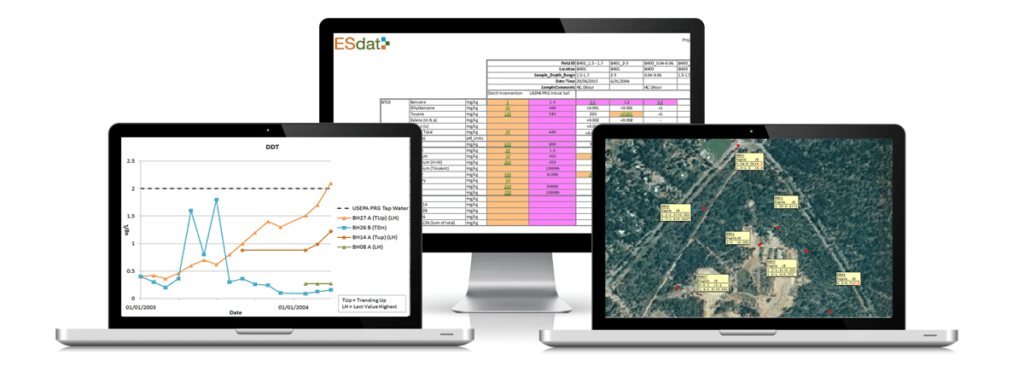Are you looking to efficiently manage your laboratory’s data yet need help finding the right solution? Let us introduce you to a laboratory information management system (LIMS).
A LIMS can help streamline your lab operations and promote data accuracy and compliance with regulatory standards. This technology allows you to access and manage your lab data like never before!
Introduction to Laboratory Information Management System (LIMS)
A laboratory information management system (LIMS) is a software-based tool laboratories use to manage their day-to-day operations, data, and workflows.
A LIMS solution typically includes sample management, data tracking and analysis, data exchange and collaboration, and instrument integration.
LIMS helps laboratories to automate their work processes and ensures better accuracy and efficiency in their operations. It allows laboratories to reduce risk factors and errors and streamlines workflows for greater productivity and cost savings. LIMS provides secure data management, traceability, and compliance with regulatory standards. By tracking samples and laboratory data more effectively, LIMS reduces the manual workload for lab technicians and scientists, freeing them to focus on critical tasks.
In conclusion, LIMS is an essential tool for modern laboratories to enhance their productivity and control the quality of their data.
Benefits of Using a Laboratory Information Management System (LIMS)
A laboratory information management system (LIMS) is a software-based solution to streamline and optimize laboratory operations. A LIMS can offer many benefits, including improved data management, enhanced productivity, increased accuracy, and regulatory compliance.
A LIMS can help laboratories manage vast amounts of data generated by testing processes, including sample tracking, instrument integration, and result reporting. By automating these processes, the LIMS can significantly reduce the risk of error and improve the accuracy of results. A LIMS can also enhance the accessibility of data, making it easier to search and retrieve specific information when needed.
In addition to improving data management, a LIMS can enhance laboratory productivity by enabling better resource planning and utilization. With real-time data capture and analysis, the LIMS can help labs identify operational bottlenecks and optimize workflows to minimize downtime and maximize throughput. So, implementing a LIMS can be genuinely transformative for laboratories of all sizes and types, enabling them to operate more efficiently, cost-effectively, and in compliance with regulatory requirements.
Types of Laboratory Information Management Systems (LIMS)
A LIMS or Laboratory Information Management System is a software-based platform designed specially to help lab technicians, scientists, and researchers manage and store laboratory samples, data, and workflows.
Here are the four types of LIMS available:
1. Industry-specific LIMS: These LIMS are tailor-made to handle specific industry or organization requirements. Such as pharmaceuticals, food and beverage production, clinical testing, microbiology, cannabis research, and other scientific research applications.
2. Data-centric LIMS: These concentrate primarily on data management and can be customized based on user requirements; this aims to optimize the data, store, and track laboratory results.
3. Cloud-based LIMS: Cloud-based LIMS are accessed through the internet, and data is stored in the cloud, thus enabling remote access to data. These systems offer cost-efficiency and scalability, making them perfect for small to medium-sized businesses.
4. Modular LIMS: Modular LIMS is customizable and flexible, where users can select specific modules based on their requirements.
By selecting the appropriate LIMS, the management and processing of samples and data are streamlined, making laboratory research more efficient.
Key Features of a Laboratory Information Management System (LIMS)
A Laboratory Information Management System (LIMS) is a software-based system designed to manage and oversee laboratory data storing, processing, and analysis. Here are the key features of a LIMS:
- Sample tracking LIMS tracks samples from the moment of sample reception and storage to disposal.
- Workflow automation LIMS automates laboratory workflows, reducing manual errors and increasing efficiency.
- Data management LIMS collects, stores, retrieves, and analyzes laboratory data, offering real-time data access from any location.
- Instrument integration LIMS integrates with laboratory instruments, allowing direct data transfer and automated data analysis.
- Quality control A LIMS supports quality control procedures and maintains data integrity and security.
- Reporting A LIMS generates custom reports, streamlining data analysis and regulatory compliance.
Pro Tip: Choose a LIMS that fits your laboratory’s needs and workflows, ensuring seamless integration and efficient data management.
Challenges of Implementing a Laboratory Information Management System (LIMS)
A Laboratory Information Management System (LIMS) is a software-based tool that manages laboratory data and information in a centralized location. However, implementing a LIMS can pose several challenges.
Challenges of Implementing a LIMS
- Data Standardization: Implementing a LIMS requires standardizing data formats, which can result in data entry errors and inconsistencies.
- Integration with Equipment: Integrating LIMS with laboratory equipment requires technical expertise and can be costly.
- User Training: Employees need to be trained on using the LIMS, which can be time-consuming and impact work productivity.
- Regulatory Compliance: A LIMS must comply with industry-specific regulations, which can vary depending on the laboratory’s focus.
Pro tip: Before implementing a LIMS, clearly understand the laboratory’s specific requirements and goals for the system to ensure a smooth transition.
How to Select the Right Laboratory Information Management System (LIMS)
A Laboratory Information Management System (LIMS) is a software-based tool commonly used by laboratories to streamline and manage their data and workflows.
| Key Factors | Considerations |
| Identify specific needs | Size, number of users, type of experiments/tests and data generated. |
| Look for user-friendly software | Intuitive interface that is easy to learn and navigate. |
| Choose a module-based system | Modules that meet the specific needs of the laboratory. |
| Check compatibility | Ensure LIMS works with current hardware and software systems. |
| Consider support and training | Vendor provides adequate training and support. |
Pro tip: Before selecting a LIMS, consult with your lab colleagues and request demos and trials from vendors.
Best Practices for Using a LIMS
A Laboratory Information Management System (LIMS) is a software-based tool that organizes, stores and tracks laboratory data to improve operational efficiency and data accuracy and comply with regulatory standards.
Here are some best practices to follow when using a LIMS:
1. Standardization of data entry procedures to eliminate errors and redundancies.
2. Proper training and adoption of the LIMS by all laboratory personnel to maintain consistency in usage.
3. Develop and enforce data security protocols to protect confidential information.
4. Regular maintenance and updates of the LIMS software to ensure system stability and functionality.
5. Establish open communication channels among LIMS users and IT/support staff to address issues, bugs, or requests.
Utilizing a LIMS can dramatically improve laboratory data’s efficiency, accuracy, and quality, saving valuable time and reducing costs.
Conclusion
In conclusion, a Laboratory Information Management System (LIMS) is a software-based solution that assists laboratories with their daily operations and information management needs. It streamlines data management, automates workflows, and helps ensure regulatory compliance.
LIMS can improve the accuracy and efficiency of laboratory processes, reduce operational costs, and increase productivity by eliminating manual processes. They can manage multiple data types, including sample tracking, test results, and quality control data.
The application of LIMS is in various industries, including pharmaceuticals, food and beverages, environmental monitoring, and forensic sciences.
A reliable LIMS is an indispensable tool for modern laboratories in managing and optimizing their daily operations.
Integrating LIMS and Environmental Data Management Systems
Laboratory Integration – ESdat, environmental data management system, supports data exchange with a global network of environmental laboratories. Accredited Laboratories automatically uploaded your Lab Reports into ESdat.
You can say goodbye to manually importing lab results and eliminate common data management challenges.
Workflow – The Workflow between clients with ESdat’s LSPECS module and the Laboratories consists of three stages before submitting the final Laboratory Report data. Laboratories can support any individual part of this process, allowing for progressive support of the entire solution.
eQuote – Generated by the Laboratories, provides quote definitions (Analyses and Containers) that users can select from.
Allowing users to select from lists specified in a quote ensures the laboratory will receive values that can be automatically recognized and matched against values in their LIMS.
eCoC – Sent from ESdat to the laboratories, including all sample information, analysis requested, and container information normally sent on a paper CoC (plus some additional details).
The laboratory can then automatically process this file, preventing the need to enter this data at sample check-in manually.
eSRN – Laboratories generate and send this file in response to receiving the physical samples.
This file is used to check if the received samples and analysis requests match what was initially sent by the client, alerting the users to any discrepancies.
ESdat is the only global platform that offers centralized Onboarding, Accreditation, and Quality Monitoring of environmental laboratory data exchange.
This means that when you use ESdat, you can trust the data will upload automatically and without error.
For more information on Workflow between clients with ESdat’s LSPECS module and the Laboratories

Related Articles on Laboratory Information Management
Field and Sample Planning Optimized with LSPECS: The Ultimate Add-On to ESdat
Unveiling the Hidden Truth: How Transparency is Revolutionizing Environmental Data
Exciting Software Update Unveiled for ESdat Users Worldwide, Elevating Data Management Experience







[…] What is a laboratory information management system (LIMS) […]